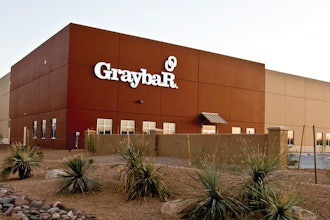
It seems odd, but many organizations and companies we've worked with have a hard time knowing who their customer is. You would think this is a simple question to answer — "who is your customer?" The challenge is too many organizations take a narrow perspective when defining a customer.
The dictionary definition of a customer is "a person or organization that buys goods or services from a store or business". But customer also has a second meaning — "a person or thing of a specified kind that one has to deal with". Most companies look at customers as the former, rather than the latter. This is simply because they are putting more impetus on those that are "paying". Whether donors, consumers, or businesses — anyone that pays the bills is a "customer".
But what about all of the other customers you have? Are employees customers? Are suppliers customers? Are vendors customers? What about partners? In short, yes - these are all your customers.
Why? Because you are serving them in some way. You have to engage with them on one or multiple levels. Even though they might not be your direct source of revenue, they do impact your brand, reputation, and downstream profitability.
Consider employees
They are one of your highest operating costs. How much do you know about your employee's needs? How can you identify if you are effectively serving those needs? Many organizations conduct "employee satisfaction surveys", but just like "customer satisfaction surveys", they are backward-looking - they identify issues and trends after they occurred. In addition, they only examine a high-level view. It's good to know that 86% of your employees are "highly satisfied", but what does that mean? Why are they satisfied? There's no way to adjust or enhance that number without knowing the levers that create that satisfaction.
Or consider suppliers
While they provide components and services to support your end deliverable, how are you building relationships and engaging with them? Are they simply a vendor to your organization, or are you examining how you can work together more effectively to increase their "satisfaction"?
 Andrea Olson, MSC, CEO of Prag'Madik
Andrea Olson, MSC, CEO of Prag'MadikIn any business, building relationships opens doors. We push and laude this mentality heavily within the sales department, but do we expand this level of engagement to other areas of the organization? What opportunities could be uncovered when we create a service mentality and behavior towards all of the "customers" an organization serves?
From discovering new business and growth opportunities, to new product ideas, to an employee with a breakthrough talent, we should engage with every person and organization that touches our business like a customer - like our best customer. Because a little bit of service can go a long way.
Andrea's 20-year, field-tested background provides unique, applicable approaches to creating more customer-centric organizations. A 4-time ADDY award-winner, she began her career at a tech start-up and led the strategic marketing efforts at two global industrial manufacturers. In addition to writing, consulting and coaching, Andrea speaks to leaders and industry organizations around the world on how to craft an effective customer-facing operational strategies to discover new sources of revenues and savings.






















